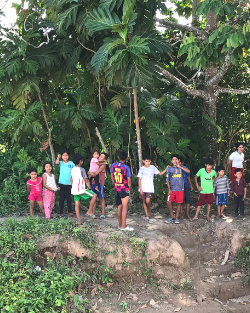The Remote Communities of the Amazon
The Amazon region has the world’s largest river system and is the lifeblood of a complex mosaic of ecosystems as well as home to millions of people who depend upon it for fishing, farming and transport. Whilst sustaining life through its rich resources, these same rivers can be, paradoxically, the biggest obstacle to the health of its inhabitants.
As well as the large majority of the water being unsuitable for safe consumption due to biological components and/or contamination from industry, the yearly fluctuations in river water levels caused by the seasonal changes impacts daily life in dramatic ways. Trillions of gallons of water transform the region during the rainy season, whilst the contrasting dry season can see river levels dropping by up to 10 metres, cutting off some smaller tributaries or making them almost unnavigable by anything bigger than small canoes.
The Amazon Hope Programme has to take these challenges into account when planning its yearly activities. In February, following a request from local community leaders and the Ministry of Health, the Forth Hope visited a remote tributary, the Tapiche River, with a team of Peruvian health professionals and Vine Trust volunteers providing vital medical care to the different villages for the first time since 2018.
One of the volunteer team, Scottish GP, Maris Buchanan reflected upon this visit to the Tapiche communities:
“The Peruvian medical team were keen to extend their services to this area, the river certainly provided navigational challenges for the crew and for the volunteers this was another area to explore.
The Tapiche River was narrow and very winding but the water level was sufficient for Forth Hope to progress without becoming grounded. Sailing so close to the river banks meant that one had the feeling of really being in the jungle. There were interesting birds to see, pink dolphins were around most days and monkeys were occasionally spotted in the trees.
Compared with larger less remote villages, one had the impression that for villages on the Tapiche River the people are living in even more basic conditions. There was often little evidence of any electricity in the villages and we did not see any new latrines or any clean water projects. There are some really isolated villages in the forest accessible only by walking along the river bank or by canoe via small channels.
“Clinical work on the Amazon involves seeing lots of people with coughs and colds, musculo-skeletal aches and pains, gastrointestinal disorders and skin problems and the work in the villages on the Tapiche River was no different. However, there were more patients requiring minor surgical procedures and with wounds requiring cleaning and dressing.
There were many, many babies and children and I think that the antenatal, contraceptive and immunisation programmes provided mainly by the Peruvian medical team were invaluable. The daily clinics were very busy and our last clinic, at the furthermost point we reached on the river, was especially busy as people were coming by canoe from villages further upstream. Even without mobile phone signals, news about the Forth Hope was spreading quickly!”
You can find out more about our medical programmes by visiting our medical page or getting in contact with our medical team at health@vinetrust.org.
